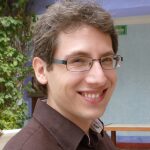Link to Pubmed [PMID] – 23142870
Nat. Methods 2012 Dec;9(12):1212-7
Membrane proteins are largely underrepresented among available atomic-resolution structures. The use of detergents in protein purification procedures hinders the formation of well-ordered crystals for X-ray crystallography and leads to slower molecular tumbling, impeding the application of solution-state NMR. Solid-state magic-angle spinning NMR spectroscopy is an emerging method for membrane-protein structural biology that can overcome these technical problems. Here we present the solid-state NMR structure of the transmembrane domain of the Yersinia enterocolitica adhesin A (YadA). The sample was derived from crystallization trials that yielded only poorly diffracting microcrystals. We solved the structure using a single, uniformly (13)C- and (15)N-labeled sample. In addition, solid-state NMR allowed us to acquire information on the flexibility and mobility of parts of the structure, which, in combination with evolutionary conservation information, presents new insights into the autotransport mechanism of YadA.
